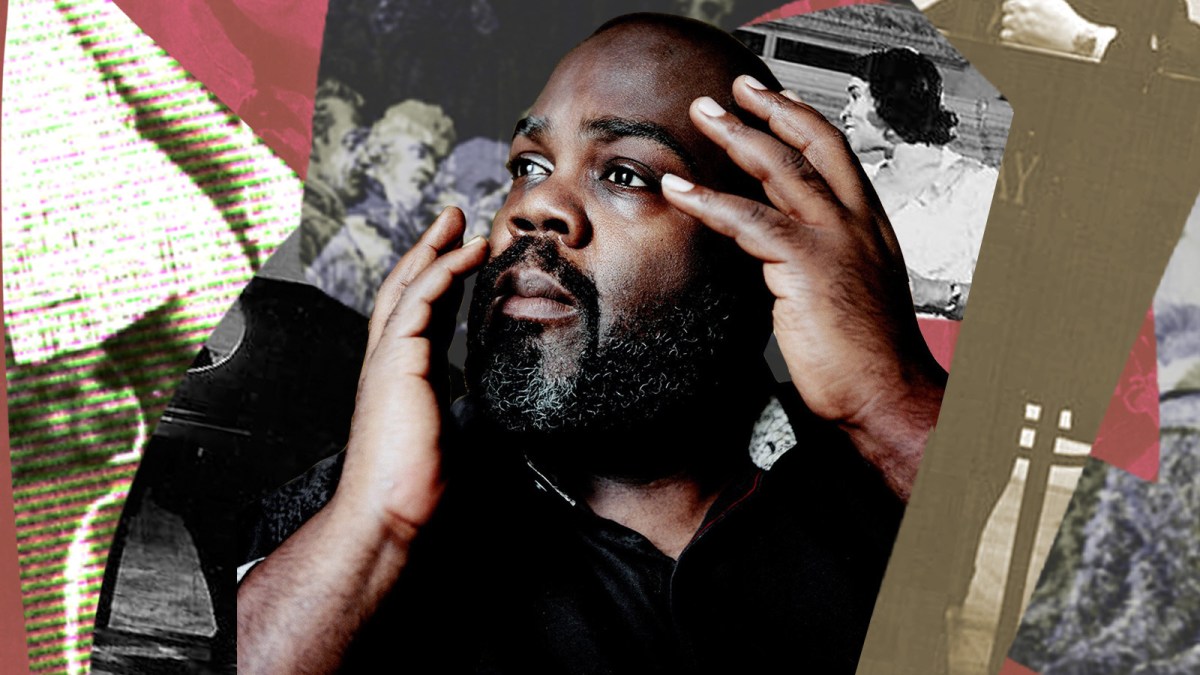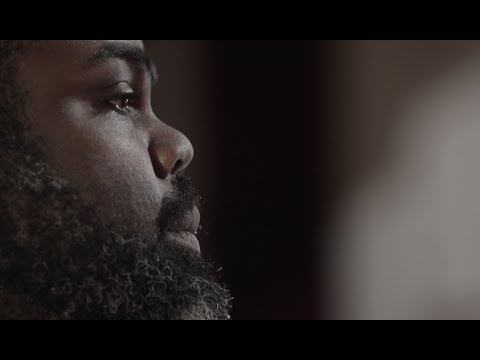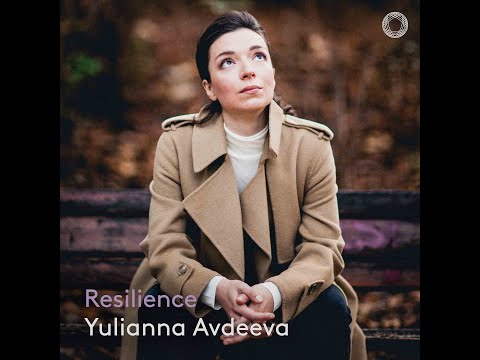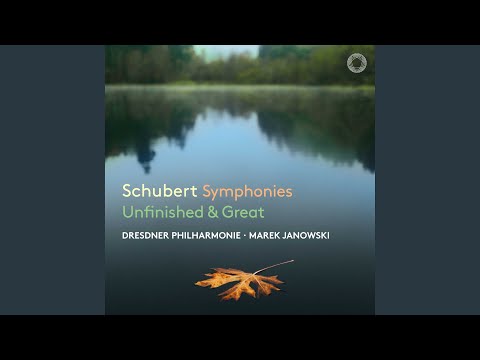- Reginald Mobley, Baptiste Trotignon: “Because” (Alpha)
- Yulianna Avdeeva: “Resilience” (Pentatone)
- Rachel Redmond, Marianne Beate Kielland, Mingjie Lei, Manuel Walser, Le Concert Des Nations, Jordi Savall: Mozart: “Requiem” (Alia Vox)
- Dresdner Philharmonie, Marek Janowski: “Schubert Symphonies: Unfinished & Great” (Pentatone)
The late (do I even have to say “great”?) Tina Turner’s first songwriting credit remains an anomaly in her canon: a riff on “City Called Heaven,” with some of the original text interspersed with Turner’s own lyrics. It’s a delicate arrangement, just Turner’s voice in its fathomless low range and Ike Turner’s slightly hollow-sounding blues guitar. The closing couplet shows her work side by side with the spiritual’s original text, and the new meaning that comes from this pairing: “My mother and father don’t own me, I’ll try to make heaven my home.” Her title for the song plays on yet another famous spiritual: “I Am a Motherless Child.”
In 1935, Lucy Hart Smith, an early pioneer in education equality in the American South (and a polymath when it came to Black heritage), delivered a talk at the annual conference for the Association for the Study of Negro Life and History. Despite being nearly a century old, much of “Negro Musicians and their Music” reads more or less as evergreen (which seems poetic given Florida’s latest salvos against equity in the American educational system). Smith notes that the “language of emotions” contained in spirituals offers the inheritors of that musical tradition “a burning desire to know something of our historical background, and hurl to us, through the years, a challenge to build on that background and take our rightful places by the side of other benefactors of mankind.” Though the conference took place nearly 75 years after the Emancipation Proclamation, she goes on to argue that the descendants of slaves still needed the power of that musical legacy: “Do we, as their descendants, need its power and beauty? Are we economically free? Are we politically free? Will not the demonstration of these achievements convince others that we are entitled to more than we receive?”
The latest from VAN, delivered straight to your inbox
At the time of this speech, Marian Anderson was touring recitals that included both “City Called Heaven” and “Sometimes I Feel Like a Motherless Child.” She was four years away from her Lincoln Memorial concert—a concert that only took place because the all-white Daughters of the American Revolution barred her from performing at Constitution Hall, a moment that would cement her multifaceted public image into what Kira Thurman describes as “a civil-rights sound bite.” Ike and Tina Turner recorded “I Am a Motherless Child” in 1968, the same year that Martin Luther King, Jr. was assassinated. It was released the following year on “Outta Season,” whose album art features portraits of both Ike and Tina wearing whiteface and eating watermelon. Both wink—Ike more pointedly, Tina more slyly—and credit the album art to Amos ‘n’ Andy.
Tracing this lineage, it’s fascinating to see how these songs adapt to the zeitgeist and reflect the signs of their times, both obvious—Ike and Tina Turner were saying the loud part out loud with “Outta Season”—and more subtle: Thurman points to the enduring image of Anderson as “the dignified, stoic, middle-aged Black woman—silent, too, unless her mouth was open in song.” In 2023, countertenor Reginald Mobley’s performance of “Motherless Child,” arranged by Baptiste Trotignon, is also a sign of our times. Trotignon’s piano accompaniment is anxious, the left hand playing an endless rhythm like a racing pulse incapable of reaching a resting heart rate. Mobley doesn’t aim for a sprinting pace, but there is a sense of urgency that grabs you by the collar.
A busy activist when he’s not onstage, Mobley seems to be telling us that this isn’t the time for stoicism or silence; these are vital times. Still, his countertenor has hints of the same otherworldly aura that Anderson held in the upper reaches of her contralto range. He works this luminousness as if he’s sharpening a knife. The phrase “a long way from home” gets stretched out with each repetition, until the distance seems endless. Did home ever really exist in the first place? In the subsequent track, “I Got a Robe,” as if in dialogue with Turner’s “Motherless Child,” Mobley accentuates one line with a delivery that’s the vocal music equivalent of a subtweet or side eye: “Everybody talkin’ ‘bout Heaven ain’t goin’ there.”
In the United States, which brought the first enslaved Africans to the country more than a century before it became a country, Mobley points out that these songs were sung and shared at the same time that, in Europe, musical traditions were developed and passed on by the likes of Bach, Mozart, and Beethoven. However, “Because” traces the lineage of spirituals into the 20th century. Nameless creators give way to the named, such as the title track—set to text by poet Paul Laurence Dunbar by Florence Price (continuing the conversation, it’s preceded by a piano solo by Baptiste, “Why”). Mobley connects the dots through to 1966 with “I Heard It Through The Grapevine,” originally recorded by Gladys Knight and delivered to canonical status by Marvin Gaye. Gaye’s soul-searing high notes are smoothed out into a sultry velvet in Mobley’s delivery, equal parts Gaye and Jessica Rabbit.
“When all of my coping mechanisms were exhausted, my rescue was to reflect about difficult situations using the language of music,” writes pianist Yulianna Avdeeva, who made headlines in 2010 for being the first woman in 45 years to win the International Chopin Piano Competition. I’m curious to hear her expand on what difficult situations she’s referring to after listening to “Resilience,” whose liner notes include that veiled disclosure. There are, after all, so many means of exhausting one’s coping mechanisms in 2023. What Avdeeva does tell us is that, in September of 2020, she found herself playing the piano that once belonged to Władysław Szpilman (whose biography was the basis for the film “The Pianist”). Szpilman’s “Mazurek” and “The Life of the Machines” become the framing device for the rest of the album, which also features works by Shostakovich, Weinberg, and Prokofiev—all composers, as Avdeeva puts it, whose “personal tragedies were immediate results of grave global disasters.”
Szpilman’s “Mazurek” is one of the most fascinating case studies that Avdeeva presents. You’d be forgiven for mistaking the melancholy, sepia-hued tune for a Chopin rarity. Szpilman composed it while living in the Warsaw ghetto, writing in the style of his forefather’s mazurkas. It was a means of playing the non-Jewish Chopin’s works after the Nazis banned Jews from playing them as part of their restrictive purity laws. “The Life of the Machines” is written in Szpilman’s own style (which owes more to Prokofiev and Shostakovich than Chopin), but its second movement echoes some of that Chopin-ian longing, stretched out to fill a wider space with fewer notes. It’s a mazurka that’s run out of batteries before it rallies, gathering steam for a dizzying and dazzling final toccatina movement that twirls and fouettes around its theme, obsessive but razor-sharp.
This age of anxiety period for 20th century music—Shostakovich’s early-career identity crisis, Weinberg’s persecution at the hands of Stalin, and Prokofiev’s repatriation to the Soviet Union shortly before World War II—fits Avdeeva without showing any sags or stretch. Her fleet-fingered dexterity allows her to deftly navigate each composer’s fits of neuroticism, but her musicality supports a read of each work beyond technical virtuosity. The lowest-of-low register finale to Shostakovich’s Piano Sonata No. 1 is so rich you could spread it on toast. Perhaps it’s because we’re seeing them all through that plush filter of the “Mazurek.” If that was deliberate, Avdeeva is all the more brilliant for it. The music speaks for her exhausted coping mechanisms—and ours.
In an interview last October for VAN, conductor and viola da gambist Jordi Savall discussed his shift from early music to the Classical and Romantic eras, telling James C. Taylor that he felt no difference performing Schubert versus Rameau. “We are following history,” he explains, describing the trajectory of his ensemble, Le Concert des Nations, as though each rehearsal and performance is a kind of workout, geared towards the development of muscle memory. “It’s a natural evolution. And the instruments haven’t changed too much—maybe the bow is a little more flexible, the winds have a little evolution, but it’s basically the same.… Everything is in the memory of the musicians.”
Even more than last year’s Schubert release, however, I was interested in hearing how this evolution sounded with Savall and Le Concert in their new recording of Mozart’s Requiem, with its full chorus and quartet of vocal soloists. While Savall is deliberately moving his orchestra forward, the decades spent cultivating a singular voice in the Medieval and Renaissance periods lends itself to a reading of Mozart that musically sounds more rooted in the past than lying in wait for the future—i.e., the late Classical and Romantic eras. It’s a question often faced in death: How much do we focus on the past and the person who has died, versus the future for those who survive them? The opening “Requiem aeternam” sounds more like the beginning of Bach’s “St. Matthew Passion” than Beethoven’s “Missa Solemnis” or Mendelssohn’s “Paulus,” which many recordings often lean more towards. Other sections—“Rex tremendae,” “Confutatis”—sound on more familiar footing with previous iterations. (Sir Neville Marriner’s recording with the Academy of St. Martin in the Fields comes immediately to mind, though the strings play the “Confutatis” theme with a bit more fire on that recording.) But the opening salvos set the tone for an overall effect of contrasts; grand gestures switched out for monastic contemplation, though at times I wish there was a bit more force behind some of the more dramatic moments—moments in which the words are best delivered as if they’re being bitten off the end of a candy bar.
The juxtaposition between Savall’s recording and many others offered as standard recommendations for a quintessential Mozart Requiem is rendered more palpable in the vocal performances. La Capella Nacional de Catalunya’s chorus sounds crisp, at times bordering on the dryness of autumn leaves or Gewürztraminer. The word “soloists” also feels like a bit of a misnomer here for how fluidly each of the four singers blend with one another. The quartet of “Recordare” feels like a single, unbroken musical line filtered through four tones. This makes some of the solos understated, such as soprano Rachel Redmond’s in “Lux aeterna” (her solos in the first few movements are more stentorian), and something in Savall’s conducting seems to favor the lower voices of bass Manuel Walser and mezzo-soprano Marianne Beate Kielland, though if Savall ever decides to record the Mozart-Da Ponte operas, he has a choice Don Ottavio and Guglielmo in tenor Mingjie Lei.
There’s nothing revolutionary about Marek Janowski and the Dresden Philharmonic’s new recording of Schubert’s “Unfinished” and “Great” Symphonies, although it’s a treat to listen to them, especially as a chaser to Savall’s Mozart. Musicologist Arnold Schering links the work to Schubert’s childhood during the War of 1812. His father, a school teacher in the Austrian countryside, attempted to give his son what he hadn’t been able to achieve: a position with prestige in the capital of Vienna. 11-year-old Schubert had other plans, and deliberately failed his exams in order to devote his life to music. He was kicked out of the family home and sent to boarding school, a punishment that eventually led to the death of his mother. It was only at her grave that father and son reconciled, but those events also became a touchpoint in a lifetime of pain and heartbreak for the young composer. For Schering, this bit of autobiography underscores Schubert’s “Unfinished” Symphony. Recognizing the beauty of his first two movements but unable to bring the work full-circle as a symphony, Schubert abandoned the work, rendering it an orphan.
Those first two movements, though, have led to the piece earning warhorse status even on half the legs. Savall, who recorded the work last year, considers it to be complete in its own right, linking the symphony to a contemporary text by Schubert, “Mein Traum,” which was also written in two parts. “He’s saying, ‘When I looked for love, I found pain. When I looked for pain, I found love,’” Savall says. “I think that’s what he’s trying to say in the Eighth.… I see the symphony as the musical version of ‘Mein Traum’ in two movements.” Janowski’s performance with Dresden suggests he may feel the same way, with the two movements fitting into each other like yin and yang. As someone who could listen to nothing but the first movement for a year and be perfectly content while doing so, I was immediately won over by the familiarity of Janowski’s interpretation, as if reading through a beloved children’s book for the first time as an adult, remembering all of the details that stood out as important in the past. The lyricism of the second movement is a balm after the turmoil of the first, and the ending—similar to Savall’s theory that it should simply die off—is an understatement, a whisper of a period at the end of the sentence that could either be the full stop or the beginning of an ellipsis. There’s also the “Great” Symphony, if C Major is your thing. No judgment. ¶
Subscribers keep VAN running!
VAN is proud to be an independent classical music magazine thanks to our subscribers. For just over 10 cents a day, you can enjoy unlimited access to over 875 articles in our archives—and get new ones delivered straight to your inbox each week.
Not ready to commit to a full year?
You can test-drive VAN for one month for the price of a coffee.





